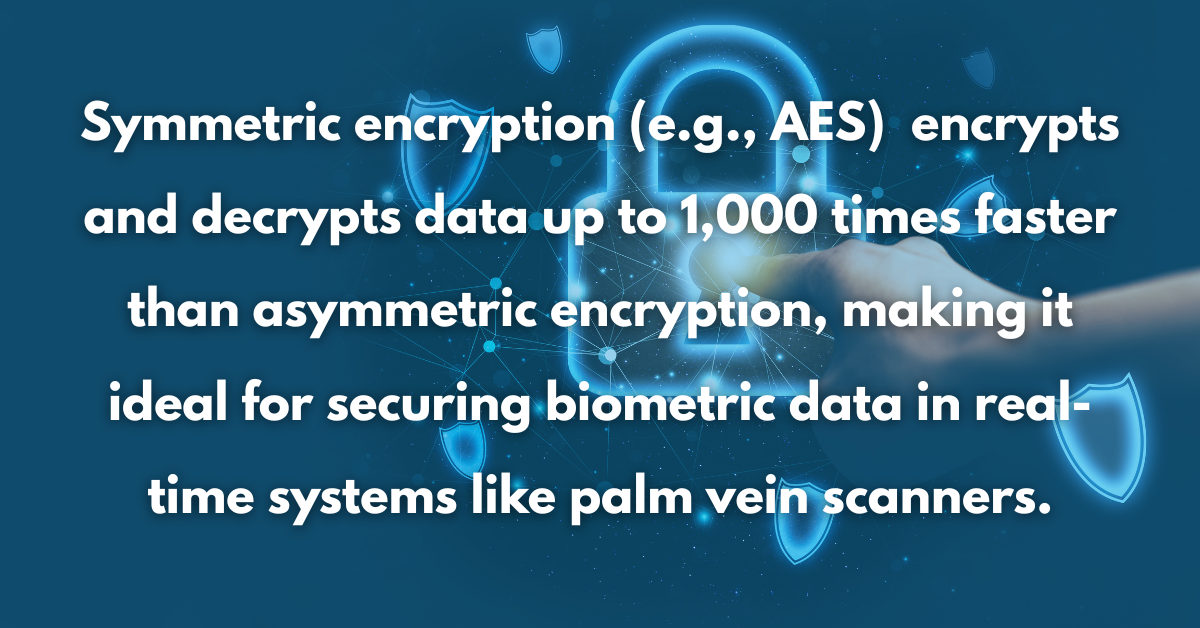Categories
Biometric data, encompassing fingerprints, facial features, and voice patterns, is central to modern security applications, from mobile device authentication to immigration checkpoints. Its unique and unchangeable nature makes it a high-value target for cybercriminals, necessitating robust protection. Secure data encryption is critical to shield this sensitive information from unauthorized access, ensuring privacy and maintaining user trust.
This article explores the essentials of encrypting biometric data, detailing encryption methods, best practices, implementation steps, challenges, and compliance considerations to achieve comprehensive security in 2025.

Biometric data’s permanence and sensitivity demand stringent protection through secure data encryption. Unlike passwords, biometric traits cannot be reset, making breaches particularly damaging. Encryption renders this data unreadable to unauthorized parties, safeguarding it against theft or misuse. Key reasons for prioritizing secure data encryption include:
Biometric identifiers, like palm vein patterns, are lifelong, amplifying the need for robust security.
Regulations like GDPR and CCPA enforce strict data protection standards to avoid penalties.
Strong encryption fosters trust, encouraging adoption of biometric systems in public and private sectors.
Various encryption techniques are utilized to ensure secure data encryption for biometric data, each tailored to specific security and performance needs. Below are the primary methods and their applications.
Symmetric encryption employs a single key for both encryption and decryption, offering high speed and efficiency. The Advanced Encryption Standard (AES) is a leading algorithm, prized for its strength and performance. It’s ideal for real-time biometric applications, such as fingerprint scanners, but requires secure key distribution to prevent vulnerabilities.
Asymmetric encryption uses a public-private key pair, enhancing security for data transmitted across networks, such as facial recognition data sent to a central server. Algorithms like RSA provide strong protection but are slower, making them better suited for secure data exchange rather than high-speed processing.
Homomorphic encryption allows computations on encrypted data without decrypting it, a breakthrough for cloud-based biometric systems. It enables secure data processing, such as matching encrypted facial templates, while preserving privacy, though its computational complexity limits widespread adoption.

Achieving secure data encryption for biometric data requires a comprehensive strategy beyond selecting an algorithm. The following best practices ensure robust protection across collection, storage, and transmission.
Apply secure data encryption at all stages—data capture, storage, and transfer—to eliminate exposure risks.
Refresh encryption keys every six months to mitigate the risk of key compromise.
Store biometric templates in hardware security modules (HSMs) or trusted execution environments (TEEs) to enhance protection.
Retain only necessary biometric data and delete it after its purpose is fulfilled, reducing potential vulnerabilities.
Regular security audits, conducted at least biannually, are essential to verify encryption integrity and address emerging threats, ensuring sustained biometric data security.
Organizations can follow a structured approach to implement secure data encryption for biometric data, ensuring effective protection. Below is a step-by-step guide:
While secure data encryption is indispensable for biometric protection, it presents several challenges that organizations must address to maintain effectiveness.
Real-time encryption, such as for palm vein authentication, can strain system resources, potentially causing delays in high-traffic environments.
Distributing and securing encryption keys across large-scale systems requires sophisticated infrastructure to prevent leaks.
Overly complex encryption can hinder user experience, while weak encryption exposes data, necessitating a careful balance.
Compliance with data protection laws is critical when implementing secure data encryption for biometric systems. GDPR mandates explicit consent and transparency, requiring organizations to inform users about data usage. HIPAA imposes strict safeguards for biometric data in healthcare, emphasizing encryption and access controls.
Ethically, organizations must uphold user privacy by limiting biometric data use to stated purposes and avoiding secondary exploitation. Clear communication about secure data encryption practices, such as through public privacy policies, helps alleviate concerns and builds trust in biometric technologies.
Secure data encryption is a fundamental pillar of ethical biometric data management, protecting irreplaceable personal identifiers from cyber threats. By adopting robust encryption methods like AES and homomorphic encryption, following best practices such as key rotation and secure storage, and addressing regulatory and ethical obligations, organizations can ensure comprehensive biometric security. These secure data encryption strategies not only safeguard privacy but also reinforce user trust, paving the way for responsible biometric innovation in an increasingly connected world in 2025.